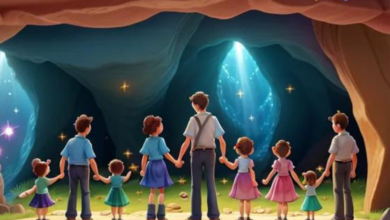Earth-Sized Planet Found: Possible Life Habitat on Long-Lived Star

An exciting new planet, similar to Earth-Sized Planet Found: Possible Life Habitat on Long-Lived Star, has been discovered by scientists. It orbits a red dwarf star. Astronomers are captivated by the size and extraordinary longevity of the host star of this newly discovered world, which has been named SPECULOOS-3 b. A habitable planet may not exist on this particular celestial body. Still, it does provide a rare chance to learn about planetary formation and the possibility of life on worlds that circle such massive stars.
The Discovery and SPECULOOS-3’s Characteristics
A group of automated telescopes known as SPECULOOS—Search for Planets Eclipsing Ultra-Cool Stars—is responsible for this finding. Specifically constructed to identify exoplanets—planets orbiting stars outside our solar system—these telescopes are situated. The Canary Islands of Tenerife. The distance between SPECULOOS-3 b and Earth is about 55 light-years, which is quite near considering the size of our Milky Way galaxy.

Its diameter is predicted to be approximately 1.4 times that of an Earth-sized Planet Found, making. The newly discovered planet is surprisingly comparable to Earth in size. As a result, it is a “super-Earth,” a type of planet bigger than Earth but smaller than gas giants such as Neptune. A single orbit around its host star takes only 17 hours on SPECULOOS-3 b, significantly shorter than Earth’s day. Because of its highly tight orbit, the planet is tidally locked, meaning that only one side of its surface is illuminated by the star.
The Host Star: A Red Dwarf With Unprecedented Longevity
Red dwarfs, much smaller and cooler than our Sun, are the stellar type that SPECULOOS-3 b orbits. Like most stars in our galaxy, SPECULOOS-3’s host star is a red dwarf. The star’s expected lifetime, though, distinguishes this system. Unlike our Sun, which is likely to burn for 10 billion years before running out of fuel, red dwarfs are expected to glow constantly for 100 billion years. Planets in orbit around these stars have an unprecedented chance of supporting life due to their extraordinarily long lifetimes.
Challenges to Habitability on SPECULOOS-3 b

Though around the Earth-sized planet Found, SPECULOOS-3 b is probably not a good place for life. Its extreme stellar radiation, caused by its close approach to its star, may have evaporated the planet’s atmosphere. The fact that one side of the Earth is always cold and the other is always hot makes the problem even worse due to the planet’s tidal locking.
Importance of SPECULOOS-3 b: A Window into Planetary Evolution
While SPECULOOS-3 b may not be a habitable planet at the moment, it could be beneficial for studying how planets have changed. By observing a tidally locked, irradiated planet, researchers can learn more about how such harsh conditions affect planetary features. On top of that, if the Earth is entirely devoid of atmosphere, scientists can examine its geology in all its glory.
Future SPECULOOS and the Search for Habitable Worlds

Finding SPECULOOS-3 b further proves that ground-based telescopes such as SPECULOOS are consistently successful in their search for extraterrestrial bodies. Astronomers hope to see even more minor planets, maybe even ones. That could support life, orbiting red dwarf stars as telescope technology improves. Future observations may reveal more information regarding. The makeup and atmospheric remnants of SPECULOOS-3 b. would significantly enhance our comprehension of this fascinating world.
A new and exciting chapter has been added to the intriguing tale of the quest for habitable exoplanets with the finding of SPECULOOS-3 b. We may not use this planet as evidence of a second Earth-sized planet Found. But it does help us move closer to discovering extrasolar planets that may be habitable. Thanks to the ever-improving capabilities of telescopes and ongoing research. More significant discoveries will be made as we continue to study the vast and diverse domain of exoplanets.





2 Comments